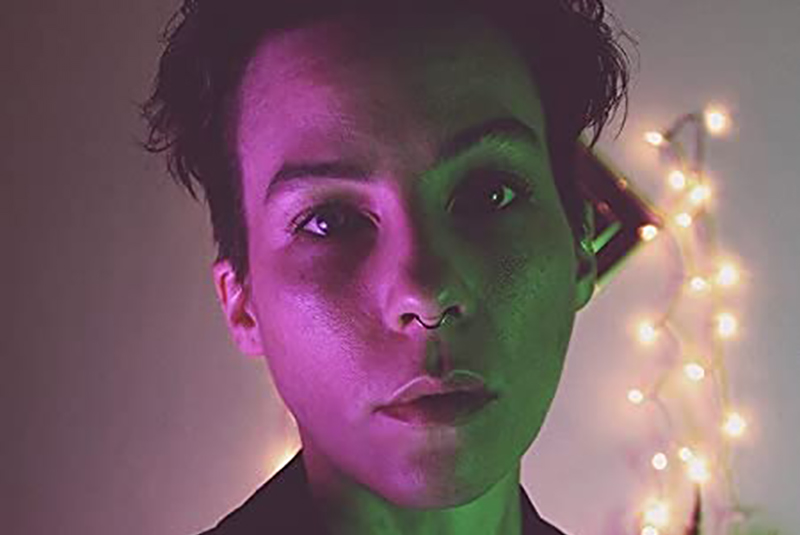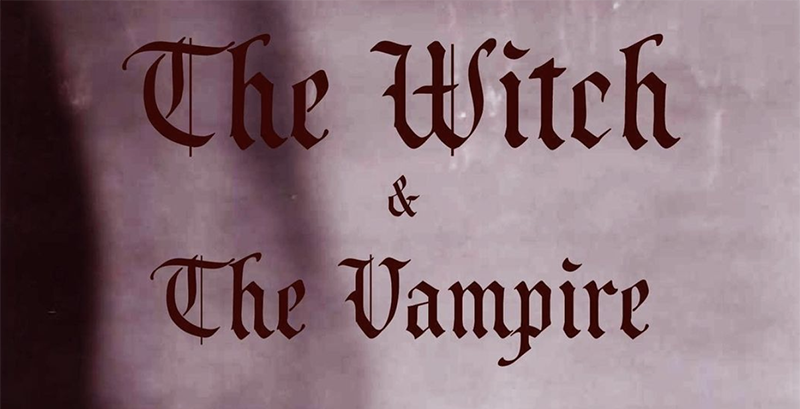On October 17th, smack dab in the middle of the witchiest time of the year, author Z Macabre (he/they) released the long awaited second book in his The Witch book series. And let me just say it was well worth the wait. Book two, The Witch and The Vampire, picks right up where book one left off. What follows is a thrill ride of sex, survival, revenge, ethical debates, love, self-actualization, and magical mother-daughter issues. Macabre’s cauldron is overflowing with new plot developments, rich character back stories, and, probing questions that will haunt you long after you finish the final page.
In book one, we first meet Marisa, “The Witch,” crunching through a pile autumn leaves on her way back home to her late mother’s house. Book two picks up in winter, amidst the quiet of town blanketed in town. But more has changed than the season. [SPOILER ALERT] When we left Marisa at the end of book one, she was grieving the loss of her lover Kylee, who died by the hands of “The Group,” a posse of religious zealots out to destroy “The Witch” and her power. As its title suggests, book two brings the arrival of “The Vampire.” Make that two vampires. Kylee, now “The Young Vampire,” who died her final death and was turned by the non-binary two-thousand year-old vampire named Ur, who just so happens to be Marisa’s former lover.

Photo from Z Macabre’s Amazon author’s page.
The arrival of vampires in Macabre’s Witchverse should come as no surprise. In an interview about “The Witch” Macabre shared that the book series began, in part, as a response to his frustration with the Twilight series and it’s highly problematic heteronormative, sex-negative story of one young woman’s transformation from human to immortal. Bella only finds agency and self-actualization through submission to the much older (and richer) vampire, as opposed to say, a college education or a life-changing internship. Edward, who was literally a product of late Edwardian morality, withholds sex (read: pleasure) from Bella until he puts a ring on it, and then again until he turns (read rebirths) her.
Kylee’s post-becoming life reads more like a transition than a coming-out. She walks through her town like a “tourist” without the guidance of semiotic signage. She is free, but with that comes a new reality she is yet to fully understand. She is othered not by her queerness but by her becoming an immortal, living among, yet separate from, humans.
“Kylee knew that she could never be the person she was before her becoming. Having no expectations to perform as the person she was no longer capable of being felt as though a heavy burden had been lifted from her. In the absence of expectation, however, came the reality that she had to learn who she was all over again. Not having to adhere to anyone’s expectations of who she should have been before her change made it easier to explore and find herself.”
“Somehow cloaked in Kylee’s dead memories, the town felt different than she remembered; everything felt like she was a tourist… it felt like she’d never been here before. In some ways, Kylee realized she never really had been.”
In The Witch and the Vampire, Kylee’s becoming stands in stark contrast to Bella’s softly lit vampire makeover. Here the longing to feed is comingled with sexual desire.
“Vampires,” Ur smiled like to feel pain. “All vampires?” Kylee asked?
Ur gently sank their teeth into Kylee’s wrist, drawing blood while they slowly tore into The Young Vampires’s flesh. It hurt, but Kylee’s eyes rolled into the back of her head.
“Kylee took a breath and then said, “Oh, I see.”
The yoking of desire and fear has long been a trope in vampire fiction. As is the vampire as a metaphorical space for readers to work through their fears of the other, particularly the LGBTQIA+ other. From the closetted Bela Lugosi’s iconic portrayal of Dracula, to vampirism as a 1980s metaphor for AIDS, to the books and films within the lesbian vampire sub-genre, it is clear that the vampire has long been read as gay. But just as book one queered the figure of the witch by making her normalizing Marisa’s queerness, book two, queers the gay/lesbian desire/fear trope first by introducing a nonbinary vampire, and more importantly, by introducing the emotional connection of love, alongside desire. Kylee, Marisa, and Ur become a queer family of sorts, making a home that is warm, safe, and loving. Yet like all homes and families, their is not free from conflict.
As we learned in book one, Marisa’s life and power require an almost vampirelike blood and body sacrifice. But Marisa was taught by her mother to only kill men, particularly those who deserved it, or those whose existence posed a threat. Ur, and now, Kylee, are, conversely guided by continual need for blood, anyone’s blood. Rather than relying on the oft-used deux ex machina of the magical world’s ban on magical species co-mingling, book two allows a rivetting and complex ethical debate to develop naturally between the trio. Again working against the traditional vampire trope, Macabre shows how Kylee, new to feeding, views each human as “beautiful’ and “special” in their ability to fill her with life. The question becomes not is it right to kill, but is there a right a way or reason to kill when your very survival depends upon it. And what happens when those closest to us step beyond the boundaries of our definitions of what’s right?
“Kylee was filled with guilt. Guilt because she didn’t regret who she had become, and she didn’t regret what she’d done since becoming. It was pain and it was death and it was fire and it was blood.”
Meanwhile, Monique’s powers are on the rise and she wants revenge for her mother’s death, which in true poetic form, was enacted by “The Witch” as revenge for her own mother’s murder. Yes folks, revenge begets revenge. And when it involves magical and immortal mother issues, let’s just say it gets good and scary. Will she recreate “The Group” or strike out on her own and go magic to magic with Marisa? And how has Monique, who is supposedly human, come to find heself embued with such power? You’ll have to find out for yourself.
Macabre’s simultaneous use of archetypal titles (e.g. “The Vampire) and first names leave us reading books one and two through both the lens of myth and the lens of the personal. Part fiction and part fable, Z Macabre’s expanding Witchverse offers a nonbinary, intersectional take on existing gay and queer horror. The Witch and The Vampire delivers what Macabre does best, thrilling erotica, gruesome gore, and,moments of magic, all served up on a big destablizing platter of questions about gender, power, ethics, and family.
Copies of both The Witch and The Witch & The Vampire are available on Amazon. The e-book version of the latter is available for free through Halloween. Talk about a treat!
Z Macabre will also be doing a live reading from the book on Halloween. Follow his social media (see below) for details.
Follow Z Macabre’s author page, Facebook, or Instagram (where you can enjoy his gorgeously gruesome video teasers).








